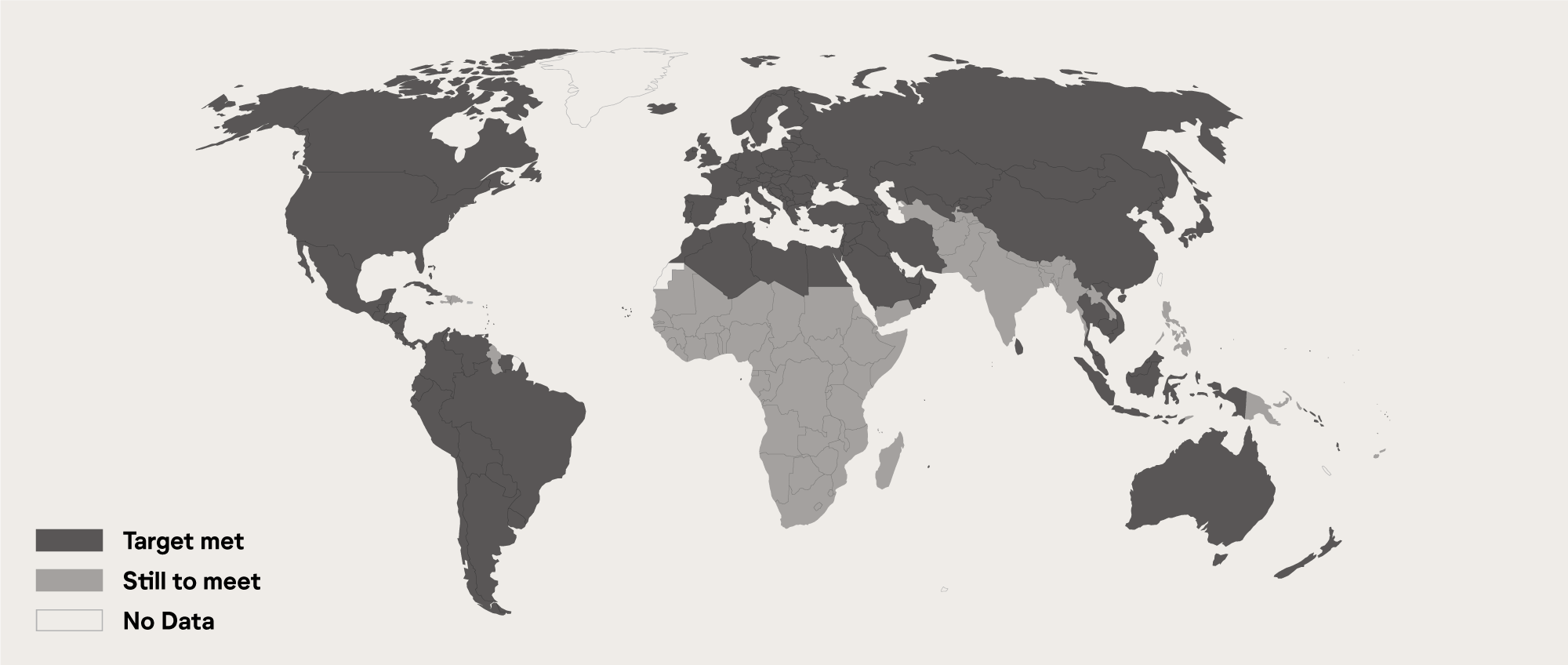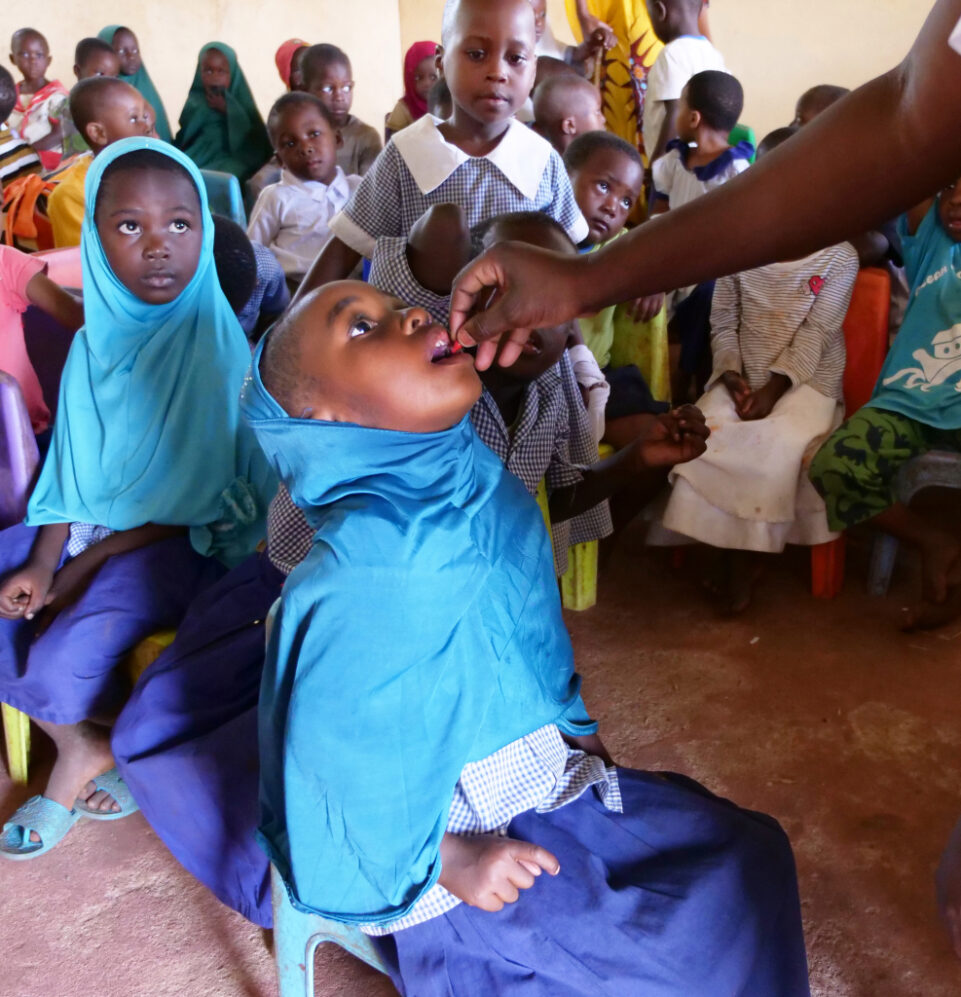Health Fund
Breadcrumb Start – DO NOT EDIT THIS SECTION
Breadcrumb End – DO NOT EDIT THIS SECTION
The Health Fund is an excellent opportunity for donors who want to support proven disease interventions, particularly of diseases and conditions which are preventable or easily treatable in high-income countries. The organizations that benefit from this fund mitigate mortality due to malaria, diarrhea, pneumonia, and HIV/AIDS, all illnesses which we have the tools to do something about. The fund also addresses other severe conditions, including malnutrition and access to quality maternal-child care.
Donations above $2 tax-deductible. See our global tax-deductibility options here.
By Card or Paypal
By Bank Transfer, Cheque, Crypto, etc.
Key Strengths: Evidence, Scale, Depth of impact
Multidimensional Poverty Index Indicators: Child mortality, Nutrition
Other Key Outcomes: Vaccination rates, Physical safety, Violence against women and girls, Child development, Healthcare utilization, Disease burden
Why donate to the Health Fund?
This fund addresses the most fundamental viewpoint of our organization: all lives are of equal value. And yet, billions of people worldwide are at risk of contracting a life-threatening disease because they don’t have access to health services. The inequality is staggering with children in wealthy countries having a 99.8% survival rate until the age of 5, while in the poorest countries, 1 in 10 children will die by the same age. Every day, approximately 16,000 children under the age of 5 die of malnutrition, birth conditions, pneumonia, diarrheal disease, malaria, and HIV/AIDS. This is a narrow list of preventable or treatable diseases and conditions. With 5.3 million children dying annually, the number of families who experience the grief of child loss could be drastically decreased with health interventions. Additionally, one third of the world’s population, of which a large percentage are pregnant women and children, are chronically malnourished, which has long-term health and development effects.
Has country already reached SDG target on child mortality?
Target 3.2 of the UN Sustainable Development Goals (SDGs) is to reduce child mortality rates to less than 1.2 per 100 live births. Child mortality refers to the estimated rate of newborns who die before the age of five.

Data source: United Nations Inter-agency Group for Child Mortality Estimation (2023) – OurWorldInData.org/child-mortality | CC BY
What is the intended impact of the Health Fund?
- Supporting nutrient fortification, including iodine and micronutrients, which prevent intellectual and developmental impairments and stunting due to deficiencies.
- Creating and/or providing preventive medicine, supplementation, and healthcare access, which address the leading causes of child deaths, such as malaria, diarrheal illnesses, and vitamin A deficiency.
- Delivering customized health education and media campaigns at scale to inform communities of essential health practices, thus saving and improving lives by supporting skills, knowledge, and behavior related to accessing healthcare.
- Promoting population health by increasing the uptake of childhood vaccinations.

How do we measure impact?
Our research team works closely with our recommended nonprofits, actively monitoring their progress on key outcomes. These outcomes focus on the health dimension and indicators of the Multidimensional Poverty Index, which include child mortality and nutrition. The nonprofits in this fund also work on other key outcomes such as healthcare-seeking behavior, preventing domestic violence, and the use of contraceptives. We explore the sources of impact metrics, ranging from internal monitoring and evaluation data, to external impact evaluations, including randomized controlled trials. In evaluating the impact of our recommended charities and projecting their future potential, we analyze the convergence of evidence from diverse sources, including external evaluations and the broader literature on specific interventions. Additionally, we assess the impact of our grants and their ability to strengthen the ecosystem of high-impact organizations. Key questions are central to these evaluations, such as:
- Do our grants effectively realize their intended objectives?
- Are our recommended nonprofits making tangible progress towards their goals on an annual basis?
- Are these organizations able to secure additional funding and expand the reach of their programs?
The successful scaling and increased financial backing of our recommended charities serve as indicators of achievement for our team.
Read more about how we measure impact
To learn more about our research and evaluation process, please refer to the following links:
How does the Health Fund work?
Through rigorous research and strategic allocation, we make discretionary grants at the end of each quarter. Our decisions are guided by direct conversations with these organizations, the fund’s balance, and a focus on programs aligned with our research and strategy.
By contributing to the fund, you entrust a team of expert grant-makers to maximize the effectiveness of your donation. Your support powers a portfolio of high-impact organizations and promising solutions while addressing time-sensitive funding gaps that individual donors might not be able to fill.
Funds are distributed quarterly, ensuring that every donation is put to work without delay. You can choose to allocate 100% of your donation to charities or dedicate 90% to charities and 10% to support our operations. We offer this option because we do not charge donor fees and instead raise operational funding separately.
Latest Grants Made
| Date | Recipient | Grant | Amount |
|---|---|---|---|
| December 2024 | Against Malaria Foundation | Supporting operating expenses | AUD 8,598.11 |
| December 2024 | Breakthrough Trust | Supporting operating expenses | AUD 4,298.98 |
| December 2024 | CEDOVIP | Supporting operating expenses | AUD 1,074.67 |
| December 2024 | Development Media International | Supporting operating expenses | AUD 10,747.61 |
| December 2024 | Helen Keller International | Supporting operating expenses | AUD 8,598.12 |
| December 2024 | Iodine Global Network | Supporting operating expenses | AUD 859.76 |
| December 2024 | Living Goods | Supporting operating expenses | AUD 4,298.98 |
| December 2024 | Malaria Consortium | Supporting operating expenses | AUD 4,298.98 |
| December 2024 | New Incentives | Supporting operating expenses | AUD 2,149.50 |
| December 2024 | Population Services International | Supporting operating expenses | AUD 2,149.50 |
| December 2024 | Sanku – Project Healthy Children | Supporting operating expenses | AUD 10,747.61 |
| December 2024 | Unlimit Health | Supporting operating expenses | AUD 10,747.61 |
Fund Manager
Our team works to recommend high-impact donations. Contact us if you have questions about giving to the Health Fund.

